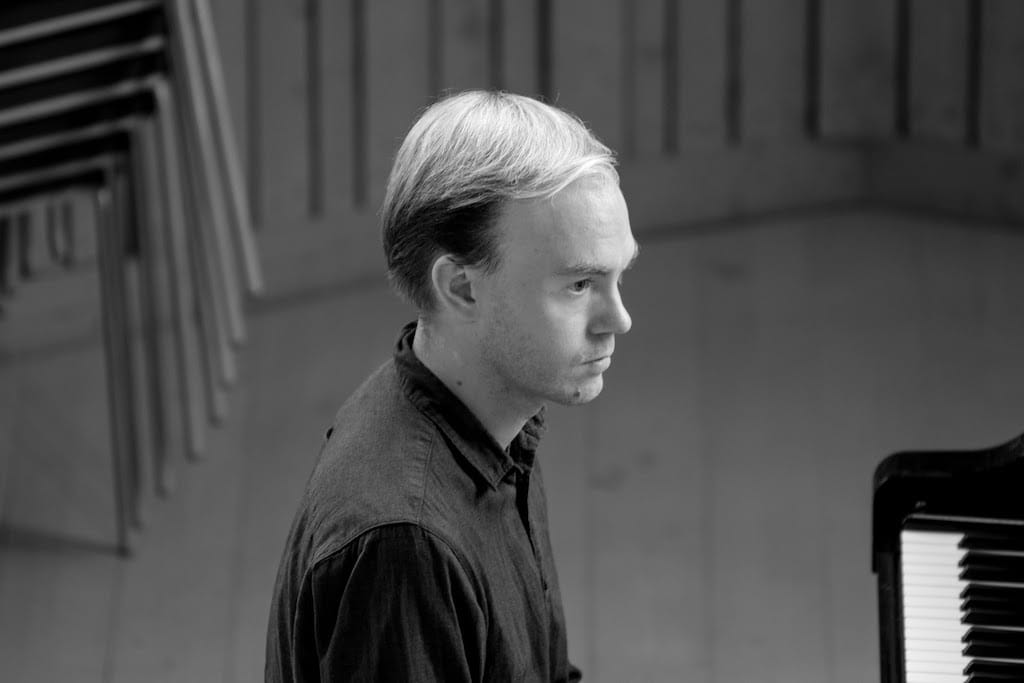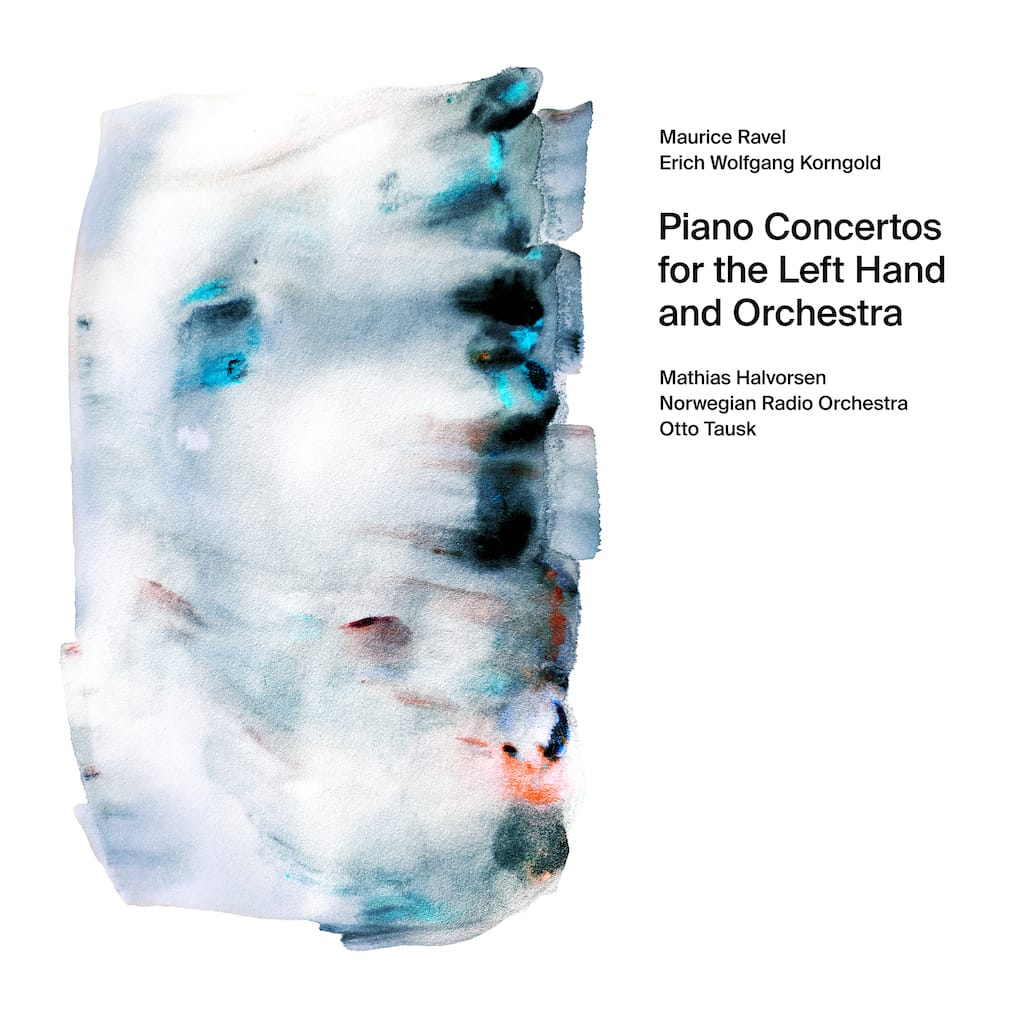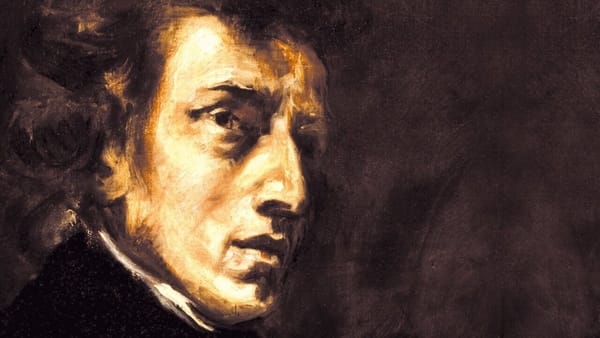Mathias Halvorsen Explores the Left-Hand Concertos of Ravel and Korngold
Mathias Halvorsen joins conductor Otto Tausk and the Norwegian Radio Orchestra to explore Ravel and Korngold’s left-hand piano concertos—profound works born from personal struggle and shaped by the scars of World War I.

Pianist Mathias Halvorsen has long been celebrated for his versatility and innovative approach to classical repertoire. Known for his daring projects, such as performing in complete darkness and reimagining operas with violin and piano, Halvorsen constantly pushes the boundaries of tradition. On his latest album, he teams up with conductor Otto Tausk and the Norwegian Radio Orchestra to deliver gripping interpretations of Maurice Ravel’s and Erich Wolfgang Korngold’s piano concertos for the left hand—two emotionally charged works commissioned by the one-armed pianist Paul Wittgenstein.
These concertos, composed in the aftermath of World War I, transcend their technical limitations to embody themes of resilience, fragility, and heroism. With Halvorsen’s nuanced artistry and the orchestra’s exceptional synergy, the album captures the raw tension and cinematic brilliance of these masterpieces, affirming the enduring relevance of live performance in a digital age.
In the interview that follows, Mathias Halvorsen delves into the artistic and historical significance of these concertos, the challenges of interpreting such emotionally charged works, and his unique approach to blending tradition with innovation.

Serenade Team: What inspired you to focus on Ravel and Korngold’s left-hand concertos for this album? How do you approach balancing their distinct styles?
Mathias Halvorsen: Both concertos are extraordinary works born out of personal and historical turbulence, tied to Paul Wittgenstein’s resilience and the aftermath of the First World War. They stand at the crossroads of tragedy and triumph, fragility and strength. Ravel’s concerto is taut and introspective, with moments of almost unbearable beauty, while Korngold’s is expansive and cinematic, filled with bold gestures and sweeping melodies. Balancing their styles involves immersing myself in their emotional worlds. With Ravel, it’s about restraint and precision, allowing the tension to simmer just beneath the surface. Korngold, by contrast, demands a broader palette, embracing its symphonic scope and narrative depth.
ST: Paul Wittgenstein’s story is deeply tied to these compositions. How did his resilience and narrative influence your interpretation?
MH: Wittgenstein’s story of overcoming the loss of his right arm to create a career as a one-handed pianist is profoundly moving. It’s not just about technical adaptation but about transforming adversity into art. His story encouraged me to focus on the tension in these pieces—the struggle between limitation and creativity, fragility and power. I try to honor that spirit in my interpretation, embracing the imperfections and human drama that are integral to these works.
ST: The “one against many” metaphor is significant in these works. How do you embody this dynamic between the piano and orchestra in your performances?
MH: This dynamic is at the heart of both concertos, and it’s something I feel deeply when performing. The piano often feels like an underdog, struggling to assert its voice against the orchestra’s weight. But there are also moments of unity, where the piano and orchestra find common ground. My role as a soloist is to embody both conflict and resolution—to convey the defiance, resilience, and ultimately the triumph of the individual voice amidst the collective.
ST: Given the athletic dimension of performing one-handed concertos, how did you prepare physically and mentally for such demanding pieces?
MH: Playing one-handed requires not just strength and precision but an entirely different kind of coordination. Physically, I focused on building stamina and flexibility in my left hand, developing techniques to ensure clarity and balance across the keyboard. Mentally, I worked to internalize the music as a whole, compensating for the lack of a second hand by shaping phrases and voicings to create the illusion of fullness. It’s a challenge, but it’s also incredibly rewarding—it forces you to rethink how you approach the instrument.
ST: Your repertoire often involves innovative projects, like performing in darkness with LightsOut or adapting operas for piano and violin. How does this creativity shape your interpretations of classical works?
MH: These projects challenge traditional performance conventions and invite me to look at classical music from new perspectives. Performing in darkness, for example, heightens the audience’s focus on sound, encouraging me to consider the music’s emotional and spatial qualities. Similarly, adapting operas requires distilling the essence of the work within its limitations. These experiences have taught me to approach classical repertoire with curiosity and flexibility, always searching for ways to make it feel immediate and relevant.
ST: In a world increasingly focused on digital and mechanical perfection, what role do you believe live, imperfect performance plays in connecting with audiences?
MH: Live performance is about risk and authenticity. It’s not just the notes—it’s the human presence, the interaction with the audience, and the unpredictability of the moment. Imperfections remind us that music is a living, breathing art form, created in real time. In the case of these concertos, the very act of performing them one-handed is an acknowledgment of human imperfection, turning limitation into an artistic statement. This is something no recording or digital perfection can replicate.
ST: You’ve worked on diverse projects, from Beethoven sonatas to Bach’s The Well-Tempered Clavier on prepared pianos. What unites these projects under your artistic vision?
MH: At the core of all my projects is a desire to explore how classical music connects with contemporary audiences. Whether through experimental techniques, unconventional settings, or bold reinterpretations, I aim to find new ways to communicate the timeless relevance of this music. Each project poses a question: How can we experience this piece in a way that feels fresh, meaningful, and alive today?
ST: What message do you hope listeners take away from this album, especially in the context of the resilience and human imperfection highlighted in the music?
MH: I hope listeners come away with a sense of the power of human resilience—the idea that beauty can emerge even from adversity. These concertos remind us that limitations are not obstacles but opportunities for creativity and expression. In a world that often strives for artificial perfection, these works celebrate the imperfections and struggles that make us human, showing that it is precisely through our challenges that we can create something truly profound.





